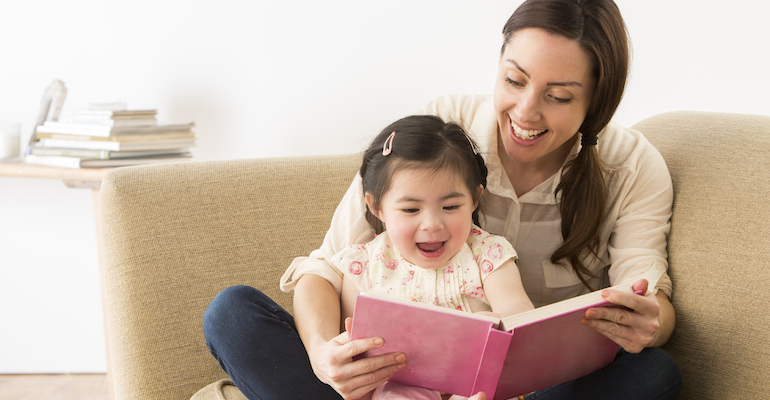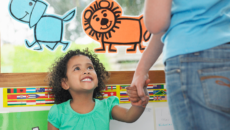When my daughter was an infant, she had a book that was the treasure of our evening routine. It was called Pat the Bunny, and each evening before bed, that’s exactly what we did. I would hold Lily on my lap and read to her about Paul and Judy, who could play peekaboo, smell the flowers, or pat the soft, furry bunny that appeared on its pages.
Pat the Bunny, by Dorothy Kunhardt, was first published in 1940, and ever since, it’s been one of those books that are beloved by non-verbal children. Why is this kind of book so important?
According to Alison Gopnik, Andrew Meltzoff, and Patricia Kuhn, authors of The Scientist in the Crib, “Babies learn a great deal about language before they ever say a word.” Numerous studies confirm that reading to infants not only boosts speech and language development, but increases overall intelligence as well.
There are other advantages to starting early with a regular reading routine. Reading with a child on your lap builds a bond that is as important as the language skills you’re teaching. For those who adopt older infants — my daughter was eleven months old when I brought her home from China — early reading sessions help children relax into a new language, and a new relationship.
The World in Black and White
Newborns see best from a distance of approximately one foot. That’s why babies’ first books should be simple and bold. Choose books with patterns (stripes, polka dots) and with black-and-white illustrations or photos. No need for words just yet.
Show What They Know
The next step is to look for simple books with pictures of things your baby loves. Dogs, perhaps, or trucks. Or even pictures of other babies. Keep it simple. These books will help a parent start teaching language. “Ball, look at the ball.” Babies may be too young to repeat these phrases, but you can be sure their brains are hard-wiring not only the words, but also the sense of turning pages from right to left.
Chew on This
In the second half of the first year, babies begin to participate actively in the reading process — first by chewing, later by pointing and cooing. This is when interactive books, like Pat the Bunny, become favorites. You might also consider cloth books that feature horns that honk or material that shines. A child is absorbing information from all of his senses, not just the visual.


